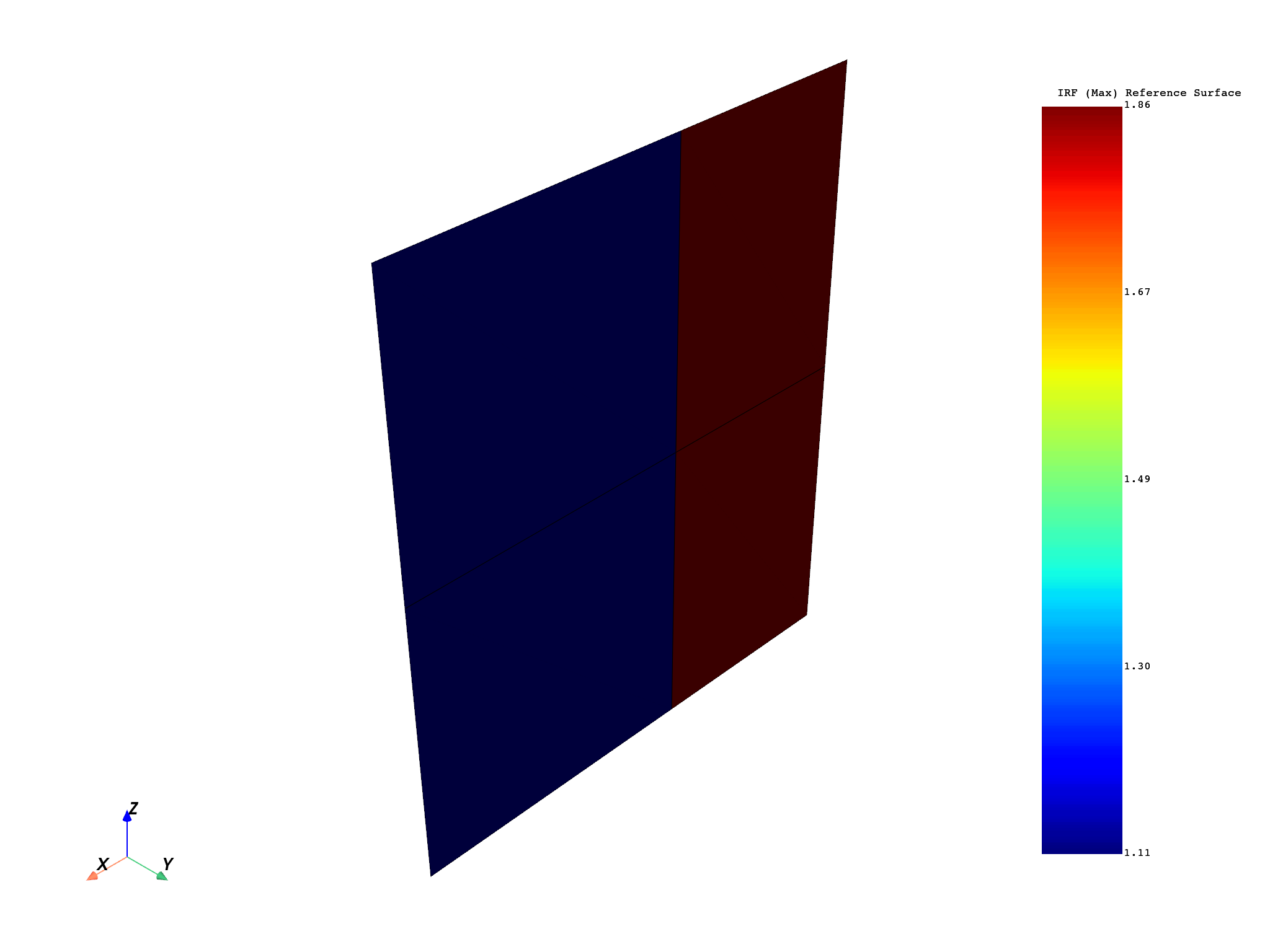Note
Go to the end to download the full example code.
Postprocess an assembly#
This example shows how to postprocess an assembly with multiple composite parts.
The assembly consists of a shell and solid composite model. The
Composite Model class is used to access
the data of the different parts.
Note
When using a Workbench project,
use the composite_files_from_workbench_harmonic_analysis()
method to obtain the input files.
Set up analysis#
Setting up the analysis consists of loading Ansys libraries, connecting to the DPF server, and retrieving the example files.
Load Ansys libraries.
from ansys.dpf.composites.composite_model import CompositeModel
from ansys.dpf.composites.constants import FailureOutput
from ansys.dpf.composites.example_helper import get_continuous_fiber_example_files
from ansys.dpf.composites.failure_criteria import CombinedFailureCriterion, MaxStressCriterion
from ansys.dpf.composites.server_helpers import (
connect_to_or_start_server,
version_equal_or_later,
version_older_than,
)
Start a DPF server and copy the example files into the current working directory.
Configure combined failure criterion#
Configure the combined failure crition.
combined_fc = CombinedFailureCriterion(
name="failure of all materials",
failure_criteria=[MaxStressCriterion()],
)
Set up model#
Set up the composite model.
composite_model = CompositeModel(composite_files_on_server, server)
Plot IRF#
Plot the maximum IRF per (solid) element.
output_all_elements = composite_model.evaluate_failure_criteria(combined_criterion=combined_fc)
irf_field = output_all_elements.get_field({"failure_label": FailureOutput.FAILURE_VALUE})
irf_field.plot()

Plot IRF on the reference surface#
Plot the maximum IRF on the reference surface
if version_equal_or_later(server, "8.0"):
irf_field = output_all_elements.get_field(
{"failure_label": FailureOutput.FAILURE_VALUE_REF_SURFACE}
)
irf_field.plot()

Get element information#
In the assembly, two composite definitions exist: one with a “shell” label and one with a “solid” label. For DPF Server versions earlier than 7.0, the lay-up properties must be queried with the correct composite definition label. The code following gets element information for all layered elements. For DPF Server versions 7.0 and later, element information can be retrieved directly.
if version_older_than(server, "7.0"):
element_infos = []
for composite_label in composite_model.composite_definition_labels:
for (
element_id
) in composite_model.get_all_layered_element_ids_for_composite_definition_label(
composite_label
):
element_infos.append(composite_model.get_element_info(element_id, composite_label))
else:
element_infos = []
for element_id in composite_model.get_all_layered_element_ids():
element_infos.append(composite_model.get_element_info(element_id))
Total running time of the script: (0 minutes 4.511 seconds)

